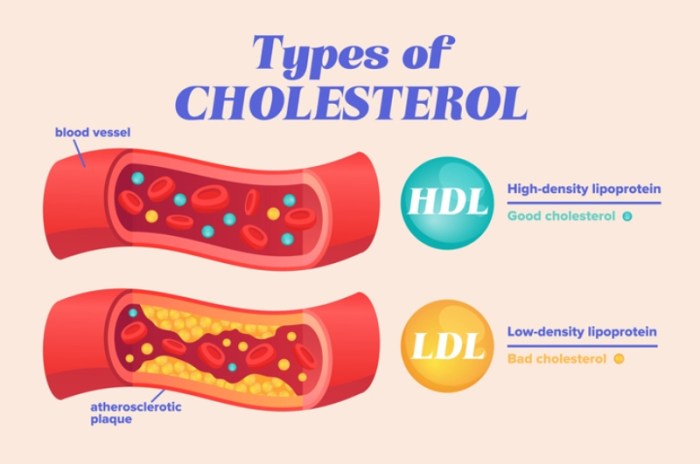What are food deserts? They’re areas where access to affordable, healthy food is limited, often due to a lack of grocery stores or supermarkets. This lack of access has profound effects on the health and well-being of communities, and understanding the complexities of food deserts is crucial to finding solutions.
This exploration delves into the definition, impact, causes, solutions, case studies, and future trends of food deserts. We’ll examine how these areas are defined, the consequences for residents, the historical and socioeconomic factors contributing to their existence, and the strategies employed to address the issue. We’ll also see how different communities are tackling the challenge, and what the future might hold for these vulnerable populations.
Defining Food Deserts

Food deserts are a critical issue affecting communities across the globe. They represent more than just a lack of grocery stores; they signify a systemic inequality in access to healthy, affordable food, often impacting marginalized populations and contributing to health disparities. Understanding the complexities of food deserts is crucial to developing effective solutions and fostering equitable food systems.Food deserts are characterized by limited access to affordable and nutritious food options.
This lack of access isn’t just about distance; it encompasses the absence of supermarkets, farmers’ markets, and other healthy food providers. This scarcity often forces residents to rely on less nutritious, and often more expensive, options like fast food restaurants or convenience stores, ultimately impacting their health and well-being.
Defining Food Deserts: A Comprehensive Overview
Food deserts are geographic areas where residents lack convenient access to affordable, fresh, and healthy food options. This is typically measured by distance to grocery stores, the density of healthy food retailers, and the availability of affordable produce and other essential nutrients. Importantly, this definition acknowledges the socio-economic factors contributing to the problem. Limited access to transportation, low income levels, and lack of transportation infrastructure can all exacerbate the challenges faced by residents in food deserts.
Key Characteristics Distinguishing Food Deserts
Food deserts are distinct from other related concepts like food swamps. While both involve access to food, food swamps are characterized by an abundance of unhealthy food options, particularly fast-food restaurants and convenience stores. Food deserts, in contrast, are marked by a scarcity of healthy food options, not necessarily an overabundance of unhealthy ones. The difference is crucial to understanding the distinct challenges and solutions needed for each situation.
Food deserts are areas where fresh, healthy food options are limited, often due to a lack of grocery stores or farmers markets. This can significantly impact the health and wellness of residents, which is why a good health and wellness writer, like health and wellness writer , often highlights the importance of access to nutritious food. Ultimately, food deserts create significant challenges for maintaining a healthy diet and lifestyle in these communities.
Measurement and Categorization of Food Deserts
Food deserts are typically measured using a combination of factors, including distance to grocery stores, the density of supermarkets and other healthy food retailers, and the proportion of residents who live more than a certain distance from these retailers. Different organizations and researchers may use different thresholds for defining a food desert, leading to variations in the results and the extent of the problem in different areas.
- Distance-based measures are frequently used, evaluating the proximity of a residence to supermarkets, farmers markets, and other grocery outlets. The precise distance threshold varies by location and study, but it often accounts for considerations such as travel time and ease of access, particularly in urban and rural environments.
- Access to stores is another key factor. The density of supermarkets and healthy food retailers within a given area plays a critical role in defining a food desert. This measurement considers the overall availability of these stores in relation to the population density.
- Economic factors are also considered. The proportion of residents with low incomes or limited transportation options often plays a significant role in assessing the severity of food insecurity in a given area. These socioeconomic factors influence the ability of residents to access healthy food.
Historical Context and Evolution
The concept of food deserts has evolved over time, gaining increased recognition in recent decades. Initially, the focus was on the physical distance to grocery stores. However, a more comprehensive understanding now encompasses the socioeconomic factors, environmental constraints, and the impact of food deserts on public health.
Comparing Food Deserts and Food Swamps
| Characteristic | Food Desert | Food Swamp |
|---|---|---|
| Definition | Geographic area with limited access to affordable and nutritious food options. | Geographic area with an abundance of unhealthy food options, such as fast-food restaurants and convenience stores. |
| Focus | Scarcity of healthy food options. | Overabundance of unhealthy food options. |
| Impact | Increased risk of diet-related diseases, limited access to healthy foods. | Increased risk of diet-related diseases due to high intake of unhealthy foods. |
| Solutions | Increased availability of healthy food options, improved transportation, community gardens. | Public awareness campaigns, improved food choices, and urban planning that restricts the density of unhealthy food options. |
Impact on Communities
Food deserts, areas with limited access to affordable and nutritious food, cast a long shadow on the communities they affect. The consequences extend far beyond mere inconvenience, impacting social well-being, economic stability, and public health. These areas often face a vicious cycle of limited resources, perpetuating a pattern of hardship and inequality.The lack of readily available fresh produce and healthy options contributes to a range of negative outcomes, affecting individuals and families across all demographics.
Understanding the multifaceted impact of food deserts is crucial for developing effective solutions and promoting healthier communities.
Social Consequences
Limited access to fresh produce and healthy foods often leads to increased rates of diet-related diseases, affecting the social fabric of communities. Communities lacking grocery stores and farmers markets experience higher rates of social isolation and decreased participation in community activities. The stress and strain associated with limited food choices can contribute to increased interpersonal conflict and family tension.
Economic Consequences
Food deserts create a significant economic burden on households. The necessity of traveling longer distances or relying on less healthy, more expensive options forces families to allocate a larger portion of their income to food. This financial strain can limit their ability to invest in other necessities like education or healthcare, hindering their long-term economic prospects. Businesses in food deserts often suffer as well, facing lower sales and a diminished customer base due to a lack of access to affordable, healthy food.
Health Consequences
Food deserts directly contribute to health disparities. Limited access to fresh produce and healthy foods results in higher rates of diet-related diseases such as obesity, diabetes, and heart disease. These conditions can lead to significant healthcare costs for individuals and communities, further exacerbating the economic burden. Children growing up in food deserts are particularly vulnerable, as their diets may lack essential nutrients crucial for healthy development and growth.
Impact on Children and Vulnerable Populations
Children in food deserts are at a significant disadvantage when it comes to healthy development. Limited access to nutritious foods can hinder their physical and cognitive growth, affecting their academic performance and overall well-being. Vulnerable populations, including low-income families and the elderly, are disproportionately affected by food deserts. Their fixed incomes and mobility limitations often make it challenging to obtain healthy food, putting them at greater risk for health problems.
Economic Strain on Households
The economic strain on households in food deserts is substantial. Families spend a larger portion of their income on food due to the limited availability of affordable and nutritious options. This reduces the funds available for other essential expenses, creating a cycle of poverty and limiting opportunities for economic advancement. The cost of transportation to reach food retailers in neighboring areas can further exacerbate this financial burden, especially for families with limited transportation options.
Correlation between Food Deserts and Obesity Rates
A strong correlation exists between food deserts and obesity rates. The lack of access to fresh produce and healthy foods leads to increased consumption of processed, high-calorie foods. This dietary pattern, coupled with limited physical activity opportunities in some food deserts, often contributes to higher rates of obesity, particularly among children and low-income families. The combined effect of limited access to healthy foods and limited opportunities for physical activity is a contributing factor to the obesity epidemic in certain communities.
Causes and Contributing Factors
Food deserts aren’t simply a matter of convenience; they’re a complex issue rooted in a web of historical, economic, and political factors. Understanding these underlying causes is crucial to developing effective solutions and fostering equitable access to healthy food. These factors often intertwine, creating a challenging environment for communities to overcome.The formation of food deserts isn’t a sudden event but rather a consequence of systemic issues that have evolved over time.
These issues are not isolated but rather interconnected, highlighting the need for a multifaceted approach to address this critical problem.
Historical Factors
Historical patterns of land use and discriminatory housing policies have played a significant role in the creation of food deserts. Redlining, a discriminatory practice that denied services and loans to residents of certain neighborhoods based on race and ethnicity, significantly limited investment in these areas. This resulted in the neglect of infrastructure, including grocery stores, and hindered the development of commercial centers that would have offered access to healthy food.
The legacy of these practices continues to affect current conditions.
Economic Policies
Government policies have also contributed to the problem. Policies that favor large-scale retailers, such as tax incentives for supermarkets located in certain areas, often leave smaller stores and community-based grocery options at a disadvantage. Moreover, lack of support for local food initiatives and farmers markets in food desert areas further exacerbate the problem. The absence of support for locally sourced food and community-based agricultural projects hinders the development of alternative food systems in these areas.
Urban Planning Decisions
Urban planning decisions have a significant impact on food access. The location of grocery stores is often influenced by factors like zoning regulations, which can restrict the development of new stores in certain areas. The lack of consideration for the needs of low-income communities in these decisions leads to a disproportionate lack of access to affordable and healthy food options.
For example, supermarkets may be located further away from low-income neighborhoods due to perceived higher crime rates or lower purchasing power in the area.
Transportation Infrastructure
Transportation limitations frequently contribute to food deserts. Limited access to reliable and affordable transportation options makes it difficult for residents to reach grocery stores, especially those located further from residential areas. This can be particularly challenging for seniors, those with disabilities, and individuals without personal vehicles. The lack of efficient public transportation can also significantly restrict access to healthy food.
Local Zoning Regulations and Supermarket Siting Policies
Local zoning regulations and supermarket siting policies play a crucial role in determining the availability of grocery stores. These policies can restrict the development of new stores in specific areas, effectively limiting the options for residents in food desert neighborhoods. Supermarket siting policies often prioritize profitability over community needs, leading to a concentration of stores in areas with higher incomes.
This is a key aspect of the problem as it is driven by economic considerations rather than community requirements.
Poverty and Income Inequality
Poverty and income inequality are inextricably linked to food desert formation. Lower incomes often limit access to healthy food options, as more affordable, processed, and less nutritious foods are frequently the only accessible choices. This cycle of poverty and lack of access to healthy food contributes to poor health outcomes and perpetuates a cycle of disadvantage. For instance, lower-income communities may have a disproportionate number of residents struggling to afford fresh produce and other healthy options.
Political and Economic Factors
Political and economic factors are fundamental to the existence of food deserts. Political decisions regarding land use, zoning, and funding for community development programs play a crucial role in shaping food access. The influence of powerful economic interests, such as large supermarket chains, can also shape the availability of grocery stores. Economic disparities are a primary cause as they lead to uneven distribution of resources and services, with marginalized communities bearing the brunt of the lack of access.
For example, the influence of large retailers on zoning regulations can limit the options for smaller, community-based grocery stores, effectively limiting the availability of fresh food in the area.
Food deserts are areas lacking access to affordable, healthy food options. This often leads to dietary deficiencies and increased risk of chronic diseases, including heart disease. Wondering when prescription drugs might be necessary to manage heart health? Check out this expert advice on the subject ask an expert when should prescription drugs be used to heart disease.
Ultimately, addressing food deserts is key to improving overall public health and reducing reliance on medication for preventable conditions.
Addressing the Issue

Food deserts aren’t just a geographical problem; they’re a societal challenge that impacts the health and well-being of entire communities. Finding solutions requires a multifaceted approach, considering the interplay of policy, community engagement, and individual action. Effective interventions address the root causes while fostering sustainable change.Tackling food deserts necessitates a comprehensive strategy that considers the specific needs of each community.
This includes understanding the local economic conditions, cultural preferences, and existing infrastructure. Only then can tailored solutions be developed that are both impactful and sustainable. This involves creating pathways for healthier food options to become readily available and accessible.
Policy Recommendations
Government policies play a crucial role in mitigating the effects of food deserts. These policies can incentivize the development of grocery stores and farmers’ markets in underserved areas. Subsidies for local farmers and businesses involved in food production and distribution can make healthy options more affordable. Regulations that limit the proliferation of fast-food chains in these communities could also contribute to a healthier environment.
Community Initiatives
Community-based initiatives are equally vital in addressing food deserts. Local farmers’ markets provide a direct link between producers and consumers, offering fresh produce at affordable prices. Community gardens can transform vacant lots into productive spaces, fostering self-sufficiency and providing opportunities for education. Mobile food pantries can offer critical support to those with limited access to traditional grocery stores.
Improving Access to Fresh Produce and Healthy Food Options
Expanding access to fresh produce and healthy food options requires targeted interventions. One strategy is to partner with local farms to establish community gardens, thereby reducing the transportation costs of produce. Community supported agriculture (CSA) programs can connect consumers directly with local farmers, promoting sustainable food systems. Initiatives that educate communities on the importance of healthy eating and cooking can empower residents to make informed choices.
Food deserts are areas lacking access to fresh, affordable produce. This can be a serious issue for anyone, but it’s particularly concerning when considering the link between nutrition and health conditions like prostate cancer. Understanding the different types of prostate cancer, like types of prostate cancer , is vital, but ultimately, improving access to healthy food options is key to combating the issue of food deserts.
Role of Government Subsidies, Grants, and Community Programs
Government subsidies, grants, and community programs can significantly contribute to overcoming food deserts. Financial incentives for grocery stores and farmers’ markets can incentivize their presence in underserved areas. Grants for community gardens and mobile food pantries can provide crucial start-up capital. Educational programs on nutrition and healthy cooking can empower residents to make informed choices.
Involvement of Local Farmers’ Markets, Community Gardens, and Mobile Food Pantries
Local farmers’ markets, community gardens, and mobile food pantries are essential components of a comprehensive strategy. Farmers’ markets offer a direct connection between producers and consumers, reducing the cost of fresh produce and offering access to local goods. Community gardens create self-sufficiency, provide opportunities for education, and transform unused land into productive spaces. Mobile food pantries address the critical need for immediate access to food in communities lacking traditional grocery stores.
Effectiveness of Interventions
| Intervention Type | Description | Potential Effectiveness | Considerations |
|---|---|---|---|
| Government Subsidies | Financial incentives for grocery stores, farmers’ markets | High potential for increasing access to affordable healthy food | Requires careful design to avoid unintended consequences and ensure equitable distribution |
| Community Gardens | Transforming unused land into productive spaces | High potential for promoting self-sufficiency, education, and community building | Requires ongoing support and maintenance |
| Mobile Food Pantries | Providing food access to underserved areas | High immediate impact on addressing food insecurity | Requires sustainable funding and logistical support |
| Local Farmers’ Markets | Direct connection between producers and consumers | High potential for promoting local economies and providing access to fresh produce | Requires marketing and outreach to reach target audiences |
Case Studies and Examples: What Are Food Deserts
Food deserts aren’t a uniform problem; their manifestations and impacts vary significantly across different communities and countries. Understanding the diverse experiences in different regions provides crucial insights into effective interventions and policy development. This section explores case studies, highlighting the specific challenges and successful initiatives in addressing these complex issues.
Case Studies from Various Locations
Different locations have experienced varying degrees of food desert issues, with each presenting unique challenges. Examining these specific cases provides a deeper understanding of the diverse impacts and potential solutions. The severity and nature of the problem often depend on factors like population density, economic conditions, and access to transportation.
- United States: The United States has numerous documented cases of food deserts, particularly in urban and rural areas. Studies have demonstrated the correlation between limited access to fresh, affordable food and health disparities. For example, communities with high proportions of low-income residents and limited grocery stores often experience higher rates of diet-related diseases like obesity and diabetes.
These communities often rely on convenience stores and fast-food restaurants, which typically offer less nutritious options.
- South Africa: Similar to the US, South Africa faces challenges related to food deserts, particularly in townships and rural areas. The high cost of transportation and limited availability of affordable fresh produce are significant contributing factors. Studies have shown the impact of food deserts on the nutritional status of children and the prevalence of malnutrition in these communities.
- Brazil: In Brazil, the uneven distribution of supermarkets and agricultural markets in certain regions creates food deserts. These issues are often intertwined with poverty and lack of access to transportation, resulting in increased reliance on processed and less nutritious food options.
Successful Community Initiatives, What are food deserts
Numerous community-led initiatives have demonstrated success in addressing food desert issues. These initiatives highlight the importance of local engagement and the development of sustainable solutions tailored to the specific needs of the community.
- Community Gardens and Urban Farms: These initiatives empower communities to grow their own fresh produce, reducing reliance on external sources and providing access to healthier options. The creation of community gardens and urban farms fosters a sense of community ownership and promotes healthy eating habits.
- Mobile Food Pantries and Farmers’ Markets: Mobile food pantries bring essential resources to underserved areas, while farmers’ markets provide access to fresh, locally sourced produce. These initiatives are often effective in addressing immediate food needs and promoting healthier food choices.
- Partnerships with Grocery Stores and Local Businesses: Collaborations between local businesses and community organizations can help increase the availability of affordable, healthy food options in underserved areas. These collaborations can ensure that a broader range of healthy foods are available and accessible.
Challenges and Successes of Intervention Strategies
Various factors contribute to the success or failure of food desert intervention strategies. Successful interventions are often characterized by strong community involvement, sustained funding, and adaptation to the specific needs of the community. Challenges can arise from logistical difficulties, funding limitations, and the need for long-term sustainability.
- Funding and Sustainability: Ensuring long-term funding for initiatives is crucial for sustainability. Identifying reliable funding sources, including government grants, philanthropic donations, and community fundraising, is essential for sustained impact.
- Community Engagement and Ownership: Involving the community in the planning and implementation of initiatives fosters ownership and ensures that solutions are tailored to their specific needs. Local knowledge and insights are crucial for successful interventions.
- Logistical Challenges: Transportation, storage, and distribution can pose significant logistical challenges. Overcoming these obstacles requires innovative solutions, such as establishing mobile food delivery systems or partnerships with existing transportation networks.
Comparison of Case Studies
| Country | Case Study | Intervention Strategy | Challenges | Outcomes |
|---|---|---|---|---|
| United States | Detroit Food Desert | Community gardens, mobile food pantries | Limited funding, transportation issues | Increased access to fresh produce, improved community health |
| South Africa | Cape Town Township | Mobile food distribution, partnerships with local vendors | High cost of transportation, limited infrastructure | Improved food security, reduced malnutrition |
| Brazil | Northeastern Region | Farmers’ markets, urban farms | Lack of transportation, inconsistent food supply | Increased access to fresh produce, improved nutrition |
Future Trends and Projections
The fight against food deserts is a long-term endeavor, requiring a forward-looking perspective. Understanding future trends in demographics, technology, and climate change is crucial for effectively addressing the evolving challenges of food access. Projections allow us to anticipate emerging needs and tailor interventions for maximum impact.The persistence of food deserts is a complex issue with interwoven factors, demanding multifaceted solutions.
Recognizing these future trends will allow us to better prepare for and address the evolving challenges of food insecurity.
Potential Demographic Shifts
Changing demographics, including population growth, migration patterns, and aging populations, can significantly impact the distribution of food deserts. Urbanization and suburban sprawl will influence the location and characteristics of underserved communities. Understanding these shifts is vital for adapting food access initiatives. For example, increased elderly populations in certain areas might necessitate specialized delivery services or mobile food pantries to cater to their specific needs.
Technological Advancements
Technological advancements hold immense potential for improving food access in underserved communities. Mobile food delivery platforms, online ordering systems for farmers’ markets, and improved transportation infrastructure can help connect residents with healthy food options. For instance, drone delivery systems could revolutionize food delivery in remote areas, addressing the issue of last-mile connectivity.
Impact of Climate Change
Climate change is expected to exacerbate existing food insecurity issues in food deserts. Extreme weather events, changing agricultural yields, and disruptions in supply chains will further complicate access to affordable and nutritious food. The impact will be particularly severe in regions already vulnerable to drought, floods, or other climate-related disasters. For instance, prolonged droughts could reduce agricultural output in certain regions, leading to price hikes and scarcity of fresh produce, thereby deepening the impact on food deserts.
Projected Growth of Food Deserts
The growth of food deserts is expected to vary across different regions based on factors such as population growth, urbanization patterns, and economic development. Regions experiencing rapid urbanization or significant population shifts are likely to see an increase in the number of food deserts. For example, rapid expansion in suburban areas without sufficient infrastructure for grocery stores could lead to new food deserts.
Future Technological Advancements and their Impact
Future advancements in vertical farming, precision agriculture, and food preservation technologies could revolutionize food production and distribution, potentially mitigating the impact of food deserts. For example, vertical farms could provide access to fresh produce in urban areas, regardless of the availability of traditional farmland.
Potential Future Scenarios and Challenges
| Scenario | Challenges |
|---|---|
| Increased reliance on online grocery delivery | Potential digital divide, high delivery costs in remote areas |
| Rise of urban vertical farms | High initial investment costs, potential for food deserts in rural areas |
| Climate change-induced food shortages | Increased food prices, displacement of populations |
| Disruptions in global food supply chains | Dependence on international trade, potential for food shortages |
Final Review
In conclusion, food deserts are complex issues with far-reaching consequences. Understanding the multifaceted nature of these areas, from their historical roots to their present-day impact on communities, is critical to developing effective solutions. Addressing these challenges requires a multi-pronged approach involving policy changes, community initiatives, and a commitment to ensuring equitable access to healthy food for all. Ultimately, the future of food deserts hinges on our collective ability to build healthier, more equitable communities.




